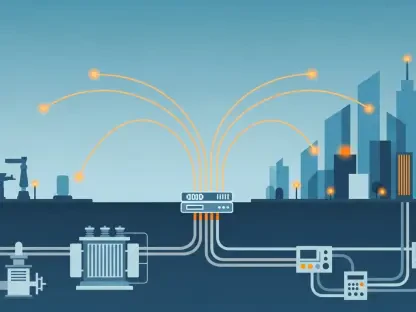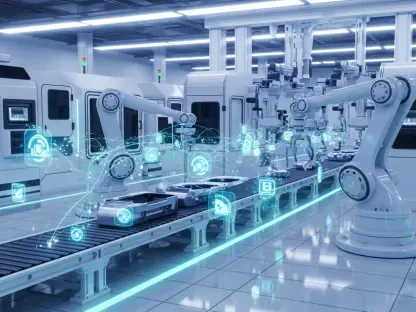In the rapidly evolving landscape of space exploration, the demand for materials that can withstand extreme conditions while enhancing performance has never been greater, especially for rocket engine components that must endure temperatures exceeding 2,000 degrees Celsius during launch. These components need to maintain structural integrity for extended burn times and reusability, a challenge that has driven innovation in materials science, leading to the development of Tanbium, a groundbreaking tantalum-niobium refractory alloy. Designed to revolutionize space propulsion, this alloy promises to address the limitations of traditional materials and bolster sovereign capabilities in the European space sector. This review delves into the intricacies of Tanbium, exploring its composition, technical advancements, and potential to reshape the future of aerospace engineering.
Understanding Tanbium Alloy
Tanbium emerges as a Refractory Complex Concentrated Alloy (RCCA), born from a strategic collaboration between Metalysis, Skyrora, and Thermo-Calc Solutions AB under the European Space Agency (ESA) General Support Technology Programme (GSTP). At its core, this alloy combines tantalum and niobium, two metals renowned for their resilience under extreme heat, making it an ideal candidate for critical rocket engine components such as nozzles and combustion chambers. Unlike conventional alloys, Tanbium is tailored to push the boundaries of high-performance applications in space propulsion.
The significance of this material lies in its ability to overcome the shortcomings of incumbent alloys like Niobium Hafnium C103 and Inconel 718, which often struggle with limited burn times and higher weight profiles. By offering a superior alternative, Tanbium addresses critical gaps in current technology, positioning itself as a pivotal advancement within the broader realm of materials science. Its development aligns with the urgent need for innovative solutions that can support ambitious space missions while reducing dependency on foreign-sourced materials.
Core Features and Technical Breakthroughs
Composition and Performance Advantages
Tanbium’s formulation is a product of cutting-edge Integrated Computational Materials Engineering (ICME) by Thermo-Calc Solutions AB, ensuring an optimized blend of tantalum and niobium that delivers exceptional properties. This alloy exhibits remarkable high-temperature strength, allowing it to maintain integrity under the intense thermal stresses of rocket launches. Additionally, its improved ductility reduces the risk of cracking, while enhanced oxidation resistance protects against degradation during prolonged exposure to harsh environments.
Beyond these attributes, Tanbium offers tangible benefits over existing materials, such as extended component lifetimes and reduced weight without sacrificing structural reliability. These performance gains translate to more efficient propulsion systems, enabling longer missions and greater payload capacities. Such advantages mark a significant leap forward, setting a new benchmark for durability and efficiency in aerospace applications.
Additive Manufacturing Compatibility
A standout feature of Tanbium is its natural suitability for laser-based Additive Manufacturing (AM) processes, particularly Skyrora’s innovative Skyprint 2 technology. Produced in a powder form through Metalysis’ solid-state electrolysis method, the alloy integrates seamlessly into AM workflows, facilitating the creation of intricate geometries that are often unattainable with traditional manufacturing techniques. This compatibility streamlines production, reducing both time and cost.
The ability to craft complex, high-performance components through AM opens up new possibilities for rocket engine design. Engineers can now produce lightweight yet robust parts tailored to specific mission requirements, enhancing overall system efficiency. This synergy between material properties and advanced manufacturing underscores Tanbium’s role as a transformative force in the space industry.
Recent Developments and Collaborative Synergy
The journey of Tanbium’s development is structured in deliberate phases, starting with an initial nine-month de-risking stage focused on material production and preliminary testing under the ESA-funded initiative. This early phase has laid the groundwork for validating the alloy’s potential, ensuring that foundational challenges are addressed before scaling up. Current efforts are geared toward achieving higher technology readiness levels (TRL), with a target of TRL 6, which involves testing full-scale prototypes in relevant operational environments.
Collaboration lies at the heart of this progress, with each partner bringing unique expertise to the table. Metalysis contributes its patented FFC Cambridge electrolysis process, enabling the production of bespoke alloys in a solid state, while Thermo-Calc Solutions AB provides computational design precision to fine-tune Tanbium’s composition. Skyrora’s AM capabilities further complement these efforts, driving innovation in manufacturing high-performance space hardware.
This partnership exemplifies a model of synergy, combining materials science, computational engineering, and advanced production techniques to push technological boundaries. As the project advances from 2025 onward, the focus remains on rigorous testing and refinement to ensure Tanbium meets the stringent demands of aerospace applications. The collective ambition is to establish a robust foundation for future scalability and integration into operational systems.
Applications in Rocket Propulsion
Tanbium’s primary application targets rocket engine components, specifically nozzles and combustion chambers, where it aims to enhance burn times and support reusability. By withstanding extreme thermal and mechanical stresses, the alloy promises to improve the reliability and lifespan of these critical parts, addressing a long-standing challenge in space propulsion design. Such improvements could redefine mission profiles, allowing for more frequent and cost-effective launches.
The broader implications for the European space industry are substantial, with projections estimating a demand for around 20,000 kg of alloy powder over the next five years to support space launch and satellite programs. Meeting this demand domestically strengthens regional autonomy, reducing reliance on US-sourced materials like C103. Tanbium thus plays a strategic role in fostering sovereign launch capabilities, ensuring Europe’s competitive edge in the global space arena.
Moreover, the alloy’s potential extends beyond immediate applications, offering a pathway to innovate across various propulsion technologies. Its integration into next-generation systems could pave the way for more ambitious exploration goals, from lunar missions to deep-space endeavors, reinforcing Europe’s position as a leader in space technology development.
Challenges in Scaling and Adoption
Despite its promise, Tanbium’s development faces significant hurdles, particularly in scaling up production to meet industrial demands. Ensuring consistent material quality for high-stakes aerospace applications remains a complex task, requiring meticulous control over production processes. Any variability in composition or properties could undermine performance, necessitating robust quality assurance mechanisms.
Regulatory and market barriers also pose challenges, as establishing a fully European supply chain involves navigating certification standards and gaining widespread industry acceptance. Aligning with stringent aerospace regulations while competing against established materials demands strategic planning and advocacy. These obstacles highlight the need for sustained investment and collaboration to bridge the gap between innovation and practical deployment.
Efforts to mitigate these issues are underway, with phased testing and strategic partnerships playing a key role. Alignment with ESA’s broader technological and sustainability objectives further supports Tanbium’s path toward adoption. By addressing these challenges systematically, the project aims to build confidence among stakeholders and pave the way for broader integration into the space sector.
Future Prospects for Tanbium
Looking ahead, Tanbium holds immense potential for further advancements, with ongoing work focused on elevating its TRL and integrating it into next-generation rocket propulsion systems. Anticipated milestones include comprehensive environmental testing and validation under real-world conditions, ensuring the alloy’s readiness for operational use. Success in these areas could solidify its position as a cornerstone of future space missions.
Breakthroughs in materials science and manufacturing techniques are also on the horizon, with potential innovations poised to enhance Tanbium’s performance and scalability. Advances in AM processes, for instance, could further optimize production efficiency, while new alloy formulations might unlock even greater thermal and mechanical properties. These developments promise to expand the alloy’s applicability across diverse aerospace challenges.
In the long term, Tanbium’s impact on the European space industry could be transformative, fostering regional autonomy and supporting ESA’s Net Zero Space ambitions through sustainable, reusable hardware. By reducing material waste and enhancing component longevity, the alloy aligns with environmental goals, positioning Europe at the forefront of responsible space exploration. Its evolution will likely serve as a catalyst for broader innovation in the field.
Final Reflections
Looking back, the development of Tanbium marked a pivotal moment in the quest for superior materials in space propulsion technology. Its journey through collaborative innovation, rigorous testing, and strategic alignment with European goals showcased a model of progress that balanced ambition with practicality. The alloy’s demonstrated strengths in high-temperature resilience and manufacturing compatibility stood as testaments to its potential.
Moving forward, actionable steps should focus on accelerating full-scale prototype testing to validate performance in operational settings. Strengthening partnerships across the supply chain will be crucial to overcoming regulatory hurdles and ensuring consistent production quality. Additionally, investment in research to explore complementary technologies could unlock new dimensions of Tanbium’s capabilities.
As the space industry continues to evolve, stakeholders must prioritize integrating sustainable practices into material development, ensuring that innovations like Tanbium contribute to a greener future. Exploring cross-sector applications, such as in satellite technology or hypersonic systems, could further amplify its impact. These considerations offer a roadmap for cementing Tanbium’s legacy as a transformative force in aerospace engineering.









